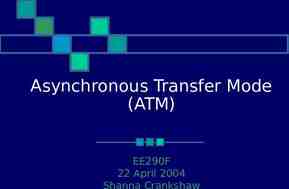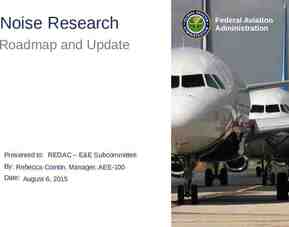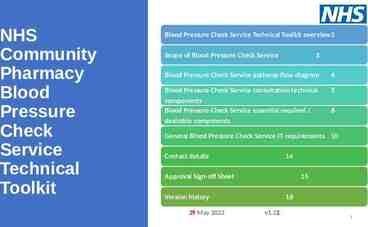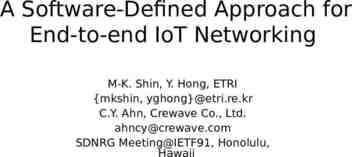嵌入式處理器架構與程式設計 王建民 中央研究院 資訊所 2008 年 7 月
66 Slides227.00 KB

嵌入式處理器架構與程式設計 王建民 中央研究院 資訊所 2008 年 7 月

Contents Introduction Computer Architecture ARM Architecture Development Tools GNU Development Tools ARM Instruction Set ARM Assembly Language ARM Assembly Programming GNU ARM ToolChain Interrupts and Monitor 2

Lecture 1 Introduction

Outline Basic Concepts Course Info Embedded Systems Programming Systems 4

Computer Systems Hardware Firmware Software Application software System software Programming systems Utilities Operating systems 5

Computer Software Application software is designed to solve a specific problem. System software is intended to support the operation and use of the computer itself. Provide a general programming environment. Provide functions used by application software and users. Provide mechanisms to share the hardware in an orderly fashion. 6

Foundations of Computer Systems Users Application Software Programming System Operating System Hardware 7

Evolution of Programming1 Machine Language Binary format 11100101100111110001000000010000 11100101100111110000000000001000 11100000100000010101000000000000 11100101100011110101000000001000 Hexadecimal format E59F1010 E59F0008 E0815000 E58F5008 8

Evolution of Programming2 Assembly Language Mnemonic codes E59F1010 E59F0008 E0815000 E58F5008 LDR LDR ADD STR R1, R0, R5, R5, num1 num2 R1, R0 sum High-Level Language C language sum num1 num2; 9

How instructions are executed? . . . E59F1010 E59F0008 E0815000 E59F5008 . . . 10

How a source program is compiled? int main() { . . . sum num1 num2; . . . } . . . E59F1010 E59F0008 E0815000 E59F5008 . . . 11

How to develop embedded software? #define GREETING “Hello, World!\n” int main() { printf(GREETING); } 12

What are you going to learn? How instructions are executed? How a source program is compiled? Computer Architecture Development tools How to develop embedded software? Embedded processors Assembly language and programming Cross development Software interrupts 13

Outline Basic Concepts Course Info Embedded Systems Programming Systems 14

Prerequisites and Related Courses Prerequisites 計算機概論 C/C 程式設計 資料結構 Related Courses 計算機結構 系統程式 作業系統 嵌入式系統 15

Course Info1 Related Links Slides and documents http://www.iis.sinica.edu.tw/ cmwang/arm/ The ARM processor http://www.arm.com/ GNU software http://www.gnu.org/ Open source software for handheld systems http://www.handhelds.org/ 16

Course Info2 PC Software Linux http://www.linux.org/ Cygwin http://www.cygwin.com/ GNU Software http://www.gnu.org/ GNU ARM ToolChain http://www.gnuarm.com/ 17

Course Info3 Reference Books Computer Organization and Design: The Hardware/Software Interface, Patterson and Hennessy System software: an introduction to systems programming, 3rd edition, Leland L. Beck. Compilers – Principles, Techniques, and Tools, A. V. Aho, R. Sethi, and J. D. Ullman. Operating System Concepts, Abraham Silberschatz. 18

Outline Basic Concepts Course Info Embedded Systems Programming Systems 19

What are embedded systems? Anything that uses a microprocessor but isn't a general-purpose computer PDAs Televisions Refrigerators Planes Remote controls Set-top boxes Video games Cars Elevators Alarm systems More than just a computer; it's a complete system 20

What is an embedded system? Computer purchased as part of some other piece of equipment Typically dedicated software Often replaces previously electromechanical components Often no “real” keyboard Often limited display or no general purpose display device But, every system is unique. There are always exceptions. 21

Why are embedded systems important? Engineering reasons Why does a satellite need a Windows prompt ? Does the McDonald’s POS (point-of-sale) termi nal need MacOS? Any device that needs to be controlled can be c ontrolled by a microprocessor 22

Why are embedded systems important? Market reasons The general-purpose computing market is in bil lions of US The embedded systems market is also in billion s of 80 Million PCs vs. 3 Billion Embedded CPUs annually Embedded market growing; PC market mostly saturated In year 2000, about 2,700 of every car went to electronics 23

Why are embedded systems important? Pedagogical reasons General-purpose system designers specialize HW vs. SW Embedded system designers are often Jackofmanytrades Need to know hardware, software, and some co mbination of networking, control theory and signal processing business models 24

Embedded Systems: An Introduction What makes embedded systems different? Real-time operation Many sets of constraints on designs Size Cost Time Reliability Energy Safety Security 25

An Engineer’s View: A Computer Measured by: performance, cost Compilers & OS matters 26

An Embedded Computer Measured by: cost, I/O connections, memory size, performance 27

An Embedded Control System Measured by: Cost, time to market, performance, functionality, dependability 28

Some Embedded System Examples Pocket remote control RF transmitter Industrial equipment controller (e.g., elevator; jet engine) 100 KIPS, water/crushproof, fits in pocket, 5 year battery life Software handcrafted for small size (less than 1 KB) 1 10 MIPS for 1 to 10 CPUs, 1 8 MB memory Safety critical software; real time control loops Military signal processing (e.g., Radar/Sonar) 1 GFLOPS, 1 GB/sec I/O, 32 MB memory Software handcrafted for extremely high performance 29

Categories of Embedded Systems1 General Computing Applications similar to desktop computing, but in an embedded package Video games, set top boxes, wearable computers, automatic tellers Control Systems Closed loop feedback control of real time system Vehicle engines, chemical processes, nuclear power, flight control 30

Categories of Embedded Systems2 Signal Processing Computations involving large data streams Radar, Sonar, video compression Communication & Networking Switching and information transmission Telephone system, Internet 31

Functions of Embedded Systems1 Control Laws PID control Fuzzy logic, . Sequencing Logic Finite state machines Switching modes between control laws Signal Processing Multimedia data compression Digital filtering 32

Functions of Embedded Systems2 Application Specific Interfacing Buttons, bells, lights,. High speed I/O Fault Response Detection & reconfiguration Diagnosis 33

Distinctive Attributes1 Reactive: computations occur in response to external events Periodic events (e.g., rotating machinery and control loops) Aperiodic events (e.g., button closures) 34

Distinctive Attributes2 Real-Time: timing correctness is part of system correctness Hard real-time Soft real-time Missing a deadline is not catastrophic Utility of answer degrades with time difference from deadline Example: Absolute deadline, beyond which answer is useless May include minimum time as well as maximum time a train is entering an urban area. the railway gate in the city allows automotive traffic to go over the tracks when should the railway gate close? In general, Real Time ! “Real Fast” 35

Embedded System Constraints1 Small Size, Low Weight Handheld electronics Transportation applications weight costs money Low Power Battery power for 8 hours (laptops often last only 2 hours) Limited cooling may limit power even if AC power available 36

Embedded System Constraints2 Harsh Environment Heat, vibration, shock Power fluctuations, RF interference, lightning Water, corrosion, physical abuse Safety Critical Operation Must function correctly Must not function incorrectly Extreme Cost Sensitivity .05 adds up over 1,000,000 units 37

Embedded System Design View A complex set of tradeoffs: Optimize for more than just speed Consider more than just the computer Take into account more than just initial product design Multi-Discipline Electronic Hardware Software Mechanical Hardware Control Algorithms Humans Society/Institutions x MultiPhase Requirements Design Manufacturing Deployment Logistics Retirement x MultiObjective Dependability Affordability Safety Security Scalability Timeliness 38

Mission Critical Applications1 Loss of Arianne inaugural flight in June, 1996 Lost a 400 million scientific payload (the rocket was extra) Efforts to reduce system costs led to the failure Reuse of Inertial Reference System software from Ariane 4 64bit float converted to 16bit int assumed not to overflow Improperly handled exception caused by variable overflow during New flight profile (that wasn't simulated because of cost/schedule) 39

Mission Critical Applications2 Exception caused dual hardware shutdown (software doesn't fail!) What really happened? The narrow view: it was a software bug; fix it The broad view: the loss was caused by a lack of system robustness in an exceptional (unanticipated) situation Many embedded systems must be robust 40

Software Drives Designs Hardware is mostly a recurring cost Software is a “one time” nonrecurring engineering design cost (NRE) Paid for ''only once'' But bug fixes may be expensive, or impossible Cost proportional to number of units manufactured Cost is related to complexity & number of functions Market pressures lead to feature creep Software Is NOT free!!!!! 41

Review What is an embedded system? What makes embedded systems different? More than just a computer it's a complete system Reactive and/or real-time Many sets of constraints on designs What embedded system designers need to know ? Multi-objective: cost, dependability, performance, etc. Multidiscipline: hardware, software, electromechanical, etc. Life-cycle: specification, design, prototyping, deployment, support, retirement 42

Outline Basic Concepts Course Info Embedded Systems Programming Systems 43

How a source program is executed? #define GREETING “Hello, World!\n” int main() { printf(GREETING); } 44

Source Model vs. Real Machine Representation in text Arbitrary variable names Rules for name scope Everything in memory Fancy operations Model uniform across computers Binary representation All numerical addresses No address scope Hierarchical memory Limited operations Significant difference between processors 45

Approaches Machine Independent Machine Dependent Human Readable High-Level Languages Assembly Languages (C, C , Java, Pascal) Human Unreadable Pseudo Code (Bytecode, P-code) Machine Languages (x86, MIPS, ARM) 46

From Source to Executable Source Code Object Code Preprocessor Linker Libraries Preprocessed Code Executable Code Compiler Loader Assembly Code Debugger Assembler 47

An Example Program C Program /* hello.c, a simple example program */ #define GREETING “Hello, World!\n” int main() { printf(GREETING); } 48

C Preprocessor Preprocess the C source Strip out comments Perform textual substitution Preprocessor output # 1 “hello.c” int main() { printf(“Hello, World!\n”); } 49

C Compiler Translate preprocessed C into assembly .LC0: .file "hello.c" .section .rodata .string "Hello, World!\n" .text .align 2 .globl main .type main,@function main: pushl %ebp movl %esp, %ebp subl 8, %esp andl -16, %esp movl 0, %eax subl %eax, %esp subl 12, %esp pushl .LC0 call printf addl 16, %esp leave ret .Lfe1: .size main,.Lfe1-main .ident "GCC: (GNU) 3.2 20020903 (Red Hat Linux 8.0 3.2-7)" 50

Assembly Language Representation in text Arbitrary variable names Rules for name scope Hierarchical memory Operations specific to target processor Model dependent on target system 51

Assembler Convert assembly into object file 1 2 3 4 4 4 4 5 6 7 8 9 10 11 12 13 14 15 16 17 18 19 20 21 0000 48656C6C 6F2C2057 6F726C64 210A00 0000 0001 0003 0006 0009 000e 0010 0013 0018 001d 0020 0021 55 89E5 83EC08 83E4F0 B800000000 29C4 83EC0C 6800000000 E8FCFFFFFF 83C410 C9 C3 .LC0: .file "hello.c" .section .rodata .string "Hello, World!\n" .text .align 2 .globl main .type main,@function main: pushl %ebp movl %esp, %ebp subl 8, %esp andl -16, %esp movl 0, %eax subl %eax, %esp subl 12, %esp pushl .LC0 call printf addl 16, %esp leave ret 52

Linker Link the object files and libraries to form an executable Fix unresolved address (call printf) Put in startup code (crt0.o) that calls main function int main(argc,argv,envp) Create executable file 53

Libraries Startup Routine (crt0.o) Required as it is the first piece of user code executed Setup arguments and environment for your main function C Library (glibc) Required as they provide functions printf, open, read, close, etc. User Libraries 54

Loader Load executable file into memory for execution Allocate memory space from operating system Load executable file into allocated memory Perform the relocation of loaded program Bootstrap Loader An small program which enables the loading of larger, more complex programs, such as the boot loader for an operating system. 55

Debugger Allow you to see what is going on “inside” another program while it executes. Start your program, specifying anything that might affect its behavior. Make it stop on specified conditions. Examine what has happened, when your program has stopped. Change things in your program, so you can correct the effects of one bug and go on. 56

Debugging Information The debugger need information to map machine code back to original program Debugging information maps Code addresses to lines in source code Data addresses to variables Registers to variables Data in memory into meaningful types 57

Development Tools Preprocessor Compiler Assembler Linker Libraries Loader Debugger . . ., etc. 58

Why are these important? Where is the bug reported by compiler? #define GREETING “Hello, World!\n”) int main() { printf(GREETING); } # 1 “hello.c” int main() { printf(“Hello, World!\n”)); } 59

How to develop embedded software? #define GREETING “Hello, World!\n” int main() { printf(GREETING); } 60

Cross Development It is usually preferred to develop software on faster and better host computers Target system and development host may be completely different Development host: PC Target system: PDA May require a different breed of tools Native development tools Cross development tools 61

Core Cross Development Tools Cross Compiler/Assembler/Linker/Loader Cross Development Libraries Assembly, object and executable file formats might be very different from native system Need special low level components to be rewritten for each different target system Cross Debugger It needs to run on both target and host The two halves need to communicate via RPC 62

Cross Development Tools Preprocessor Compiler Assembler Linker Libraries Loader Debugger Archiver Simulator Emulator 63

Archiver Archive A single file holding a collection of other files in a structure that makes it possible to retrieve the original individual files. Most often used as libraries holding commonly needed subroutines. Archiver A program that allows you to create, modify, and extract from archives. 64

Simulator Software tool allows designers to analyze the system behavior Examine simulated hardware events which cause software to take actions (e.g., interrupts) Devices can be modeled (e.g., DMA) Same software as final system Does not run at full (target) speed Good for finding software bugs 65

Emulator Hardware and software tools allow designers to analyze the system Normally a critical component is substituted by a “plug” attached to emulator Execute at full speed Good for finding hardware bugs 66






